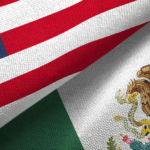The answer is not as straightforward as you think
How Much Investment is Adequate for an E-2 Visa Application? - Many prospective entrepreneurs who are planning to expand into, or start a new business in the US via the E-2 investment visa often seek clarification on what levels of capital or investment are necessary to make this possible.
An E-2 Visa is a Visa that is available for entrepreneurs, investors and business owners who wish to live in the U.S. to develop and direct the operations of a business. According to U.S immigration services, “The business can be large or small and in order to qualify for the Visa, applicants must meet specific requirements. One of these requirements is that the Investment amount must be “substantial”.
The question then often arises of “How much money has to be spent to qualify for the visa, and what exactly does ‘substantial mean’” The not so simple answer is that the U.S. Government does not have a predetermined amount that they consider substantial. This means that there is no minimum and no maximum amount, its all open to interpretation.
So how is an investment amount considered substantial?
In order to assess whether the E-2 applicant has invested enough money, the government uses a proportionality test.
This test looks at the total amount that is required to start up a business and then applies the standard of “substantial” investment by looking at how much was spent in relation to the total expenditure needed to set up the business. As such, if your business is a service business such as a consulting business, the investment that is required will be much lower than if your business is a capital-intensive business such as an electric car manufacturing plan.
There are documented cases where investments as low as $50,000 have been adequate, where approximately $15,000 was spent on equipment, startup costs, lease and other items and cash of around $35,000 was deposited in a business bank account.
While an E-2 investment of $50,000 is considered low and your risk of denial is higher with this low investment amount its generally accepted that this is the base investment amount to be considered and a business model tied to an E-2 application with this amount of investment must be an agile company.
With that said, denials do happen where significantly more is invested, if the business plan and business model don’t make sense. Each case is fact specific and reviewed on the merits of the case, so you should prepare and focus on documenting how you plan to turn your minor investment into a major business.
Points that will be considered when reviewing your E-2 investment amount
• Only a “small” reasonable amount of cash can be included in the investment amount and this is designated as working capital. As such, you cannot just put hundreds of thousands of dollars in an account and expect an approval.
• Most of the expenditures should generally be money spent in the U.S. but can also be included in the E-2 investment amount if spent outside of the U.S.. on services such as legal, relocation and startup costs.
• Office leases count as investment. We recommend using companies such as ‘Regus, WeWork and Spaces while in the application process to minimize long term contractual risks.
• Intangible assets can be included in the investment amount as long as you can substantiate the value. These can include software that has been developed, patents and intellectual property if a value can be determined.
• Investment amounts that are secured by assets from the business cannot be included in the investment amount. The amounts must be at risk.
• You should ensure that you keep records of all of your expenditures as immigration may want to see them during your interview and they should also be well documented and enclosed within your application packet.
The bottom line is, the investment must be sufficient to ensure the successful operation of the enterprise. The percentage of investment for a low-cost business enterprise must be higher than the percentage of investment in a high-cost enterprise. While some investments of less than $100,000 are approved, it’s safe to say that the investment capital and reserves should total no less than $100,000 in most cases.
Some evidence you can use to prove that the investment is substantial is corresponding personal and/or business bank statements, itemized list of goods and materials purchased for the start-up, and corresponding financial accounting documentation. It’s also wise to put together a business plan that illustrates your projected success.
The investor must have control of the funds
At risk means that the investor is to be irrevocably committed. If you’re able to walk away from the investment without losing anything, you do not qualify. The applicant must have already spent the money towards the startup, purchase of a U.S. business, or enterprise. Loans secured with the assets of the investment enterprise are not allowed. The investment must be at risk of being lost due to the business or enterprise being unsuccessful.
If you are purchasing an existing business, you should know all there is to know about the business and its counterparts. Learn the all the components of the business and come to an educated conclusion of how well they are doing presently and how successful the business is projected to be.
The investment must be a real operating enterprise
A real operating enterprise means that the enterprise must be offering a tangible good or service. Examples of these enterprises are restaurants, retail stores, medical offices, etc. Speculative or idle investment such as real estate investments, undeveloped land, or stocks held by an investor who has no intent to direct the enterprise does not qualify. Similarly, uncommitted funds in a bank account or similar security are not considered an investment.
The investment may not be marginal
A marginal enterprise will not project enough return on investment to make a significant economic contribution. The enterprise must generate significantly more income than just to provide a living to the investor and family, or it must have a significant economic impact in the U.S.
Planning and documenting are key
One of the main ways to build a strong business case for your E-2 investment visa is to put together a solid business plan, document your investment, expenses and projected business plans to showcase how your investment is or can be turned into something ‘substantial’.
Find out how to put together your E-2 visa application via our white-paper that you can download here.




